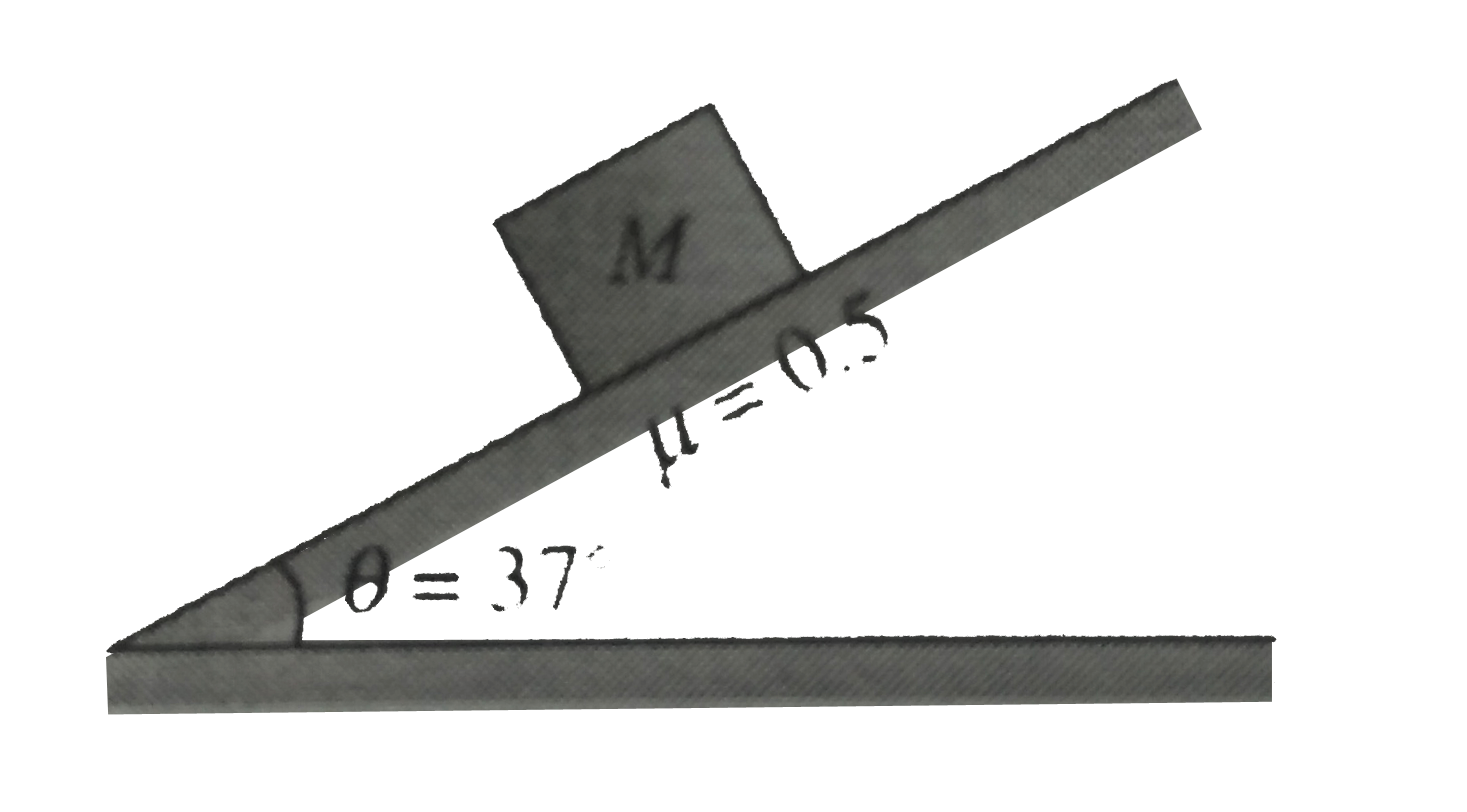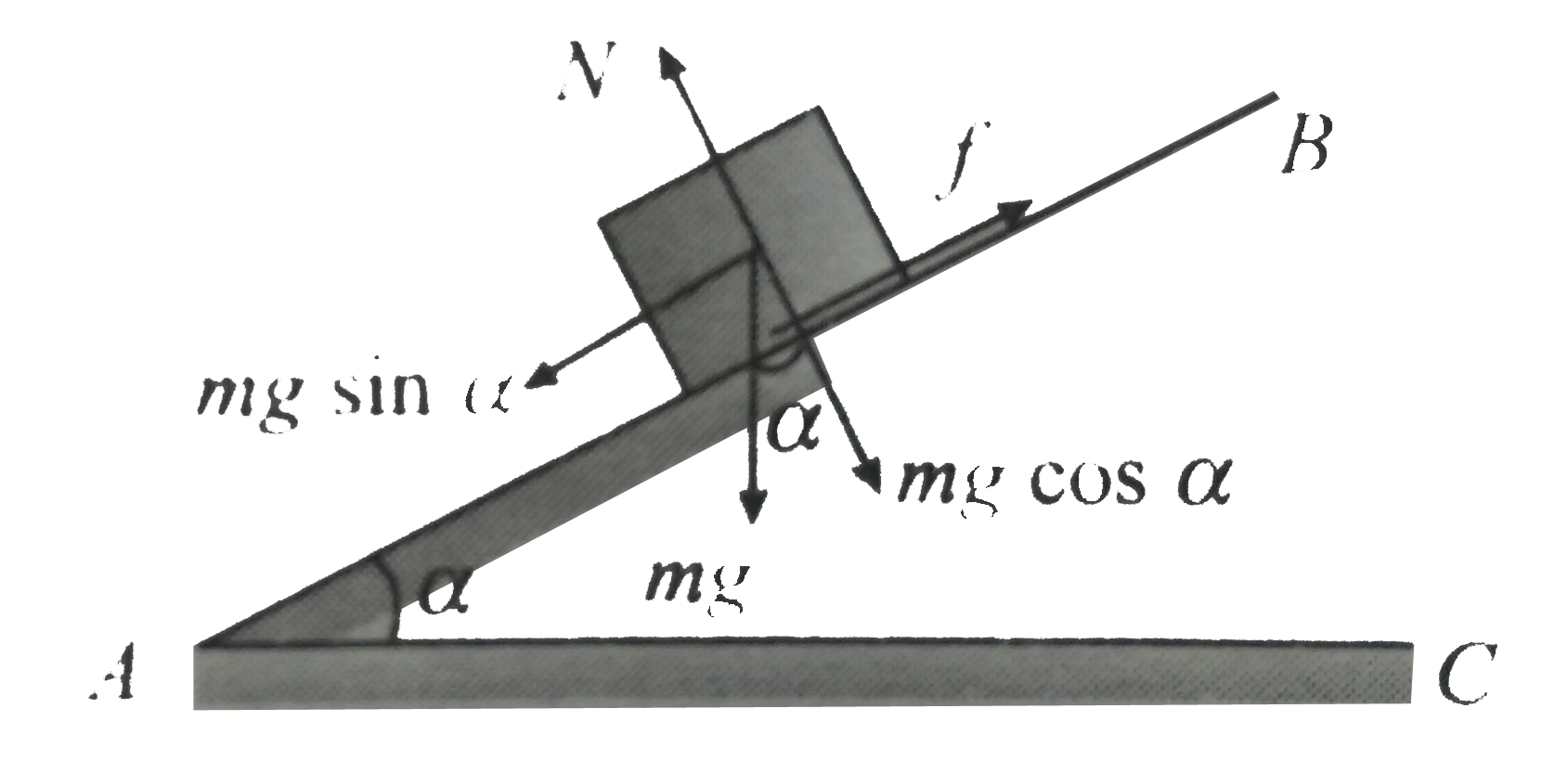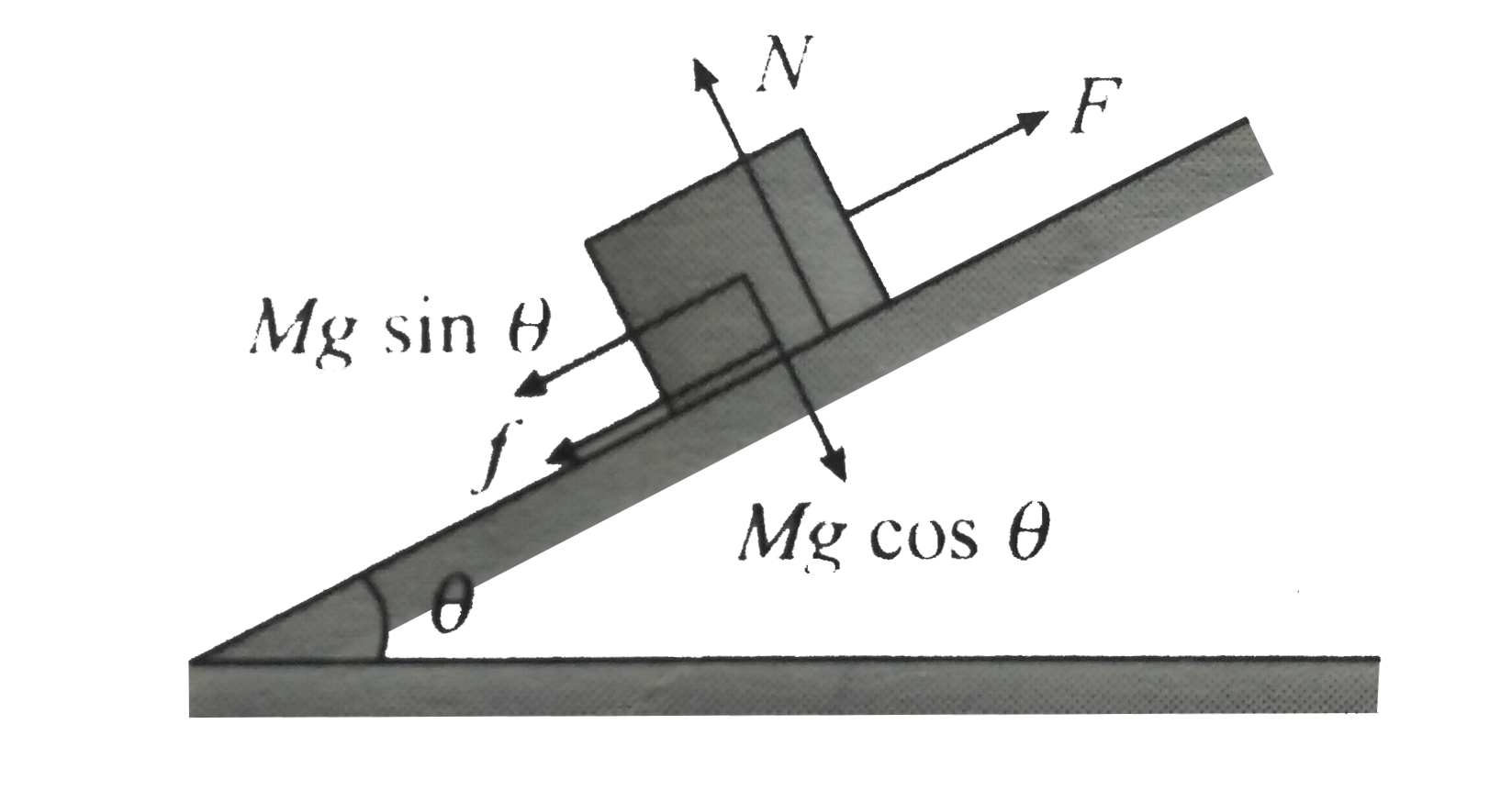A block of mass is placed inclined plane , inclined at angle with horizontal The coefficient of friction between the block and inclined is
a. Calculate the acceleration of the block when it is released
b. Now a force is appling on block as shown find out the acceleration of the block If the block is initially at rest .
c. In case (b), how much force should be added to force so that block the starts to move up the incline.
d. In case (b), what is the minimum force by which force should be replaced with so that the block does not move?


a. Here angle of repose

The angle of inclination is greater than the angle of repose
For the acceleration of block .
b. If external force is applied on the block

Let as find net driving force acting on block . parallel to incliend two externalforces are acting are one in upward direction and other is the component of weight in the direction downward the plate
Net driving force
Maximum resisting force that opposw relative motion maximum friction force (or
Here Hence, the block will not move and friction will be static and will act is the direction opposite to driving force i,e in downward direction .
c. To move the block the least value of driving force should be . But in above case, driving force is (up)Hence if we add in upward direction , the block will overcome maximum resistance force (or friction) as starts moving up
d. As resisting force which is maximum friction is and the component of weight parallel to incline is and acting downward If the only component of the weight in direction downward the incline plane

In this case , friction will act in upward direction hence the required value of to make in equalibrium
or
Topper's Solved these Questions
- NEWTON'S LAWS OF MOTION 2Book:CENGAGE PHYSICSChapter:NEWTON'S LAWS OF MOTION 2Exercise:Solved Examples
Explore 12 Videos
- NEWTON'S LAWS OF MOTION 2Book:CENGAGE PHYSICSChapter:NEWTON'S LAWS OF MOTION 2Exercise:Exercise 7.1
Explore 25 Videos
- NEWTON'S LAWS OF MOTION 1Book:CENGAGE PHYSICSChapter:NEWTON'S LAWS OF MOTION 1Exercise:Integer
Explore 5 Videos
- PROPERTIES OF SOLIDS AND FLUIDSBook:CENGAGE PHYSICSChapter:PROPERTIES OF SOLIDS AND FLUIDSExercise:INTEGER_TYPE
Explore 2 Videos
Similar Questions
Knowledge Check
A block of mass m slides down an inclined plane which makes an angle θ with the horizontal. The coefficient of friction between the block and the plane is μ. The force exerted by the block on the plane is
AmgcosθB√μ2+1mgcosθCμmgcosθ√μ2+1DμmgθA block of mass m is placed on a rough plane inclined at an angle θ with the horizontal. The coefficient of friction between the block and inclined plane is μ . Ifθ<tan−1(μ) , then net contact force exerted by the plane on the block is :
Amg cos θBmgCmg sin θDNone of theseA block is lying on an inclined plane which makes 60∘ with the horizontal. If coefficient of friction between block and plane is 0.25 and g=10m/s2, , then acceleration of the block when it moves along the plane will be
A2.50m/s2B5.00m/s2C7.4m/s2D8.66m/s2
A block of mass 2kg rests on a rough inclined plane making an angle of 30∘ with the horizontal. The coefficient of static friction between the block and the plane is 0.7. The frictional force on the block is
View SolutionA block of mass m is placed at rest on an inclination θ to the horizontal.If the coefficient of friction between the block and the plane is μ, then the total force the inclined plane exerts on the block is
View SolutionA block of mass m is placed on a smooth inclined plane of inclination θ with the horizontal. The force exerted by the plane on the block has a magnitude
View SolutionA block of mass m slides down an inclined plane of inclination θ with uniform speed. The coefficient of friction between the block and the plane is μ. The contact force between the block and the plane is
View SolutionA block of mass m slides down an inclined plane of inclination θ with uniform speed The coefficient of friction between the block and the plane is μ. The contact force between the block and the plane is .
View Solution

